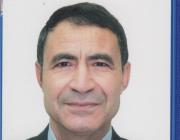Abstract:
This investigation examines mathematical modelling and experimental validation of two types of solar cookers: a box type with tilted intercept area equipped with one external reflector, and a parabolic cooker with a new configuration. Experiments were carried out with the cookers filled with two kilograms of water from 08:00 to 15:00 solar time. During the experiments, temperature gain in the box-type solar cooker was recorded at about 69.8 °C and in the parabolic-type solar cooker at 73.6 °C at the stagnation point. Direct normal irradiation in three distinct study areas was observed and found that it varied from 7.6 to 10 kWh m−2. Cooking pot placed in parabolic cooker was varied between 130 and 132 °C. Centre and south-east regions of study areas where global irradiation varied from 8 to 8.4 kWh m−2 were found suitable for box-type solar cooker and cooking pot temperature were found in the range of 100 °C to 105 °C. Mathematical modelling was programmed in MATLAB. The theoretical results were consistent with experiential data for both types of solar cookers. The effectiveness of the two cooker types can be deduced from the maps. It is found the use of the cookers in Northern and Southern regions of the country was not identical. Their suitability for cooking depends on the amount of solar radiations received.
Publisher's Version
